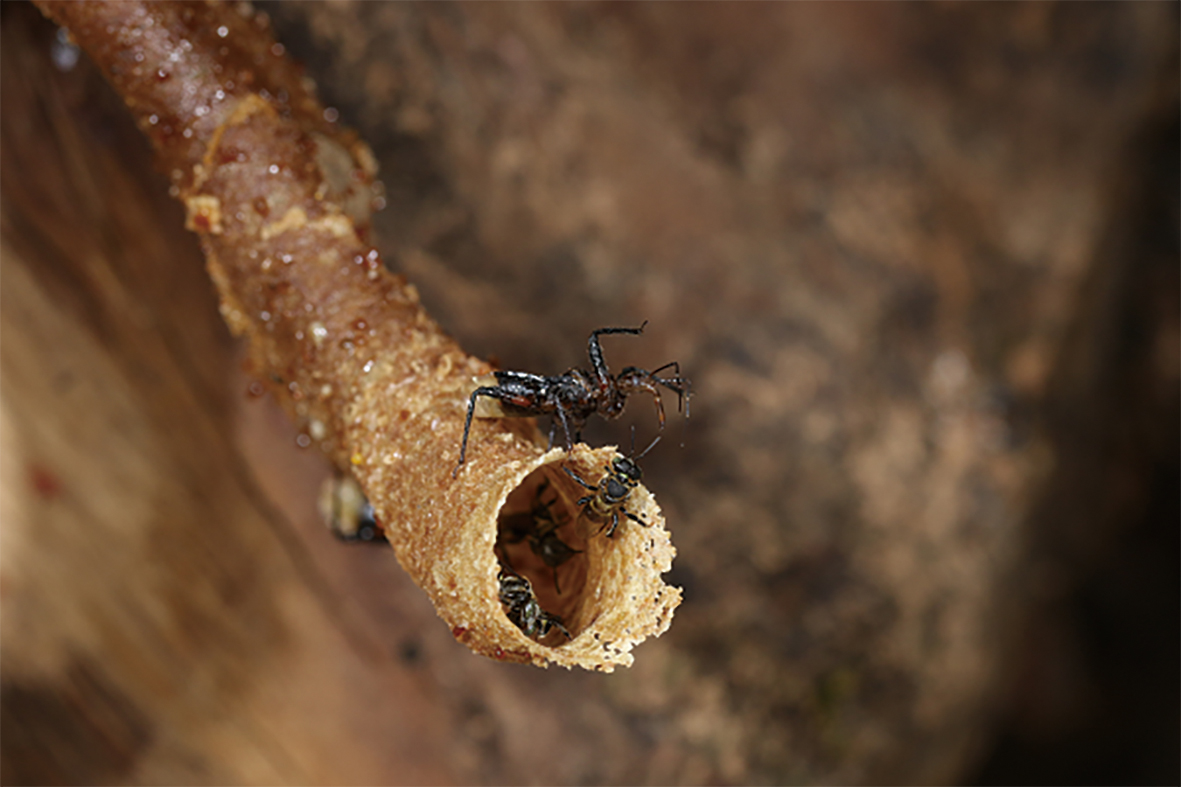Tool use—once considered rare in insects—has been documented in a crafty predator. Researchers from China Agricultural University, and two institutions under the Chinese Academy of Sciences—the Xishuangbanna Tropical Botanical Garden (XTBG) and the Institute of Zoology—revealed that the assassin bug Pahabengkakia piliceps weaponizes resin from stingless bee nests to trick its prey. Published in PNAS on May 12, the study offers the first evidence of an invertebrate predator exploiting social insects’ defenses through tool use.
Stingless bees coat nest entrances with sticky resin to trap intruders like ants. Once the invader gets stuck, guard bees swarm to immobilize them. But the assassin bug turns this defense into a lethal trap: it collects resin on its legs, amplifying chemical signals that lure guard bees into attack range. Field trials showed resin-coated bugs achieved a 75% predation success rate—compared to less than 30% for resin-free bugs. Chemical analysis revealed the resin’s volatile compounds, not its stickiness, were key to disorienting bees.
“This is a sophisticated manipulation of prey behavior,” said Dr. WANG Zhengwei from XTBG. “The bug doesn’t just avoid detection—it actively provokes attacks to create opportunities.” The bug’s reliance on stingless bees for survival likely drove this evolutionary adaptation, challenging assumptions that complex tool use requires advanced cognition.

An assassin bug, coated with resin, raises its fore legs at the entrance preparing to prey. (Image by CHEN Zhaoyang)

